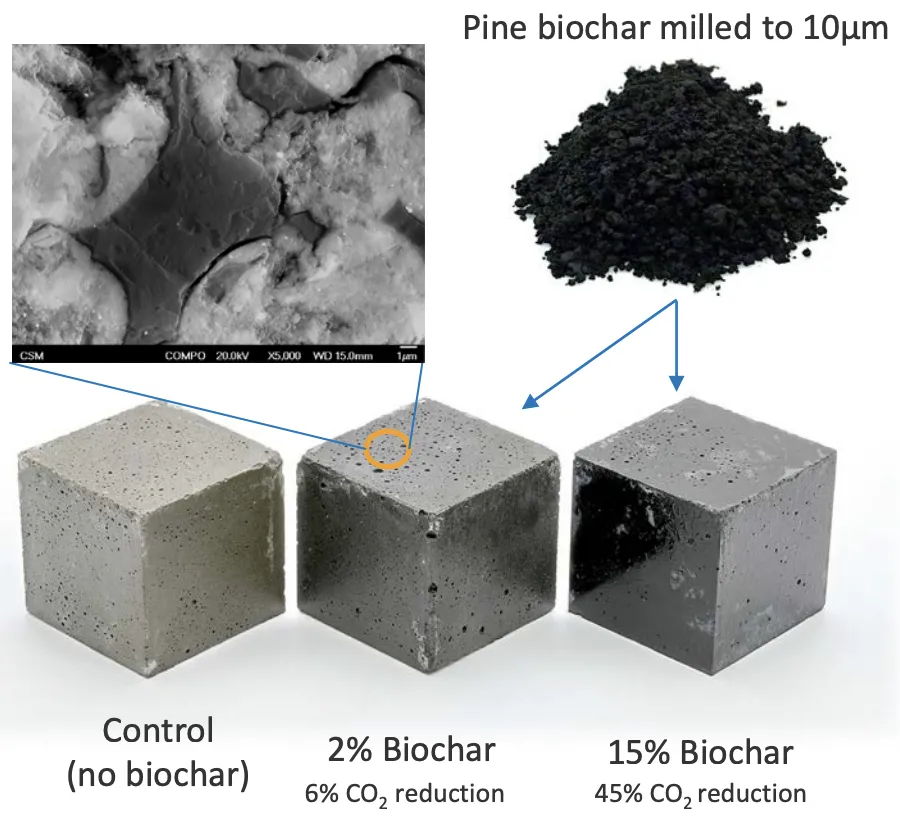18 Dec, 2024
Case Study: Biochar as a Building Material
Posted at 21:56h
in Infrastructure Biochar: Research & Case Studies
Research: Biochar as a Building Material
Sequestering carbon and strengthening concrete
A study from the National Renewable Energy Lab (NREL) hypothesized that woody biochars with higher surface area and water sorption capacity can replace cement at higher levels than previously thought giving the potential for carbon-negative concrete by 2050.
Conclusion:
- Biochar can replace up to 32% of cement in concrete
- Concrete enhanced with biochar is more resistant to wear and tear and shows improved compressive strength and durability.
- Biochar’s smaller pores, improved flexural strength.
- Every ton of biochar used captures 2.2 tonnes of CO2-stored long-term in concrete.
- Biochar in concrete offers cost savings in the long term due to improved material
properties and reduced need for repairs.


